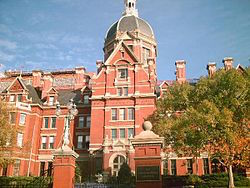
“David and Goliath (1599) oil painting by Caravaggio.
Herewith the story of Evergreen Health Cooperative, created under the federal Affordable Care Act to offer “patient-centered” care and cut healthcare-market costs. (We keep being slightly amused by term ”patient-centered” care. Isn’t that the population that healthcare was always suppose to be centered on? Well, maybe not….Follow the money?)
Evergreen has two parts: a nonprofit insurance company with a traditional network of doctors and a health system that directly employs providers.
“We’re the first new commercial insurer in 20 years in Maryland as far as we know,” Peter Beilenson, M.D., a former Baltimore health commissioner, told The Baltimore Sun. “It’s not easy to have a successful startup in a state that basically has a monopoly,” citing CareFirst BlueCross BlueShield, Maryland’s dominant insurer.
Evergreen is one of 24 such co-ops in America, officially called Consumer Operated and Oriented Plans, and, as The Sun noted, ”many of them face similar behemoths.”
And the ACA doesn’t let these co-ops do traditional marketing. Further, government rules make it hard to sign up large employers that could bring in many paying customers at once.
”That fierce competition {from big insurers} is the biggest hurdle to the co-ops’ success …. But there are a host of other potential stumbling blocks, including name recognition and funding, and the co-ops are responding by boosting their industry knowledge, aggressively marketing their services and cutting premium prices to lure customers, ” reports The Sun.
Evergreen looks to small businesses that it could attract on its own and enroll in groups. ”So far, about 1,000 small businesses employing {a total of} about 12,000 people have switched to the co-op.”
Research ”shows those insurers that follow the {co-op} model could save around 20 percent on hospitalizations alone, one of their biggest costs.”
We wonder how some of these co-ops might be integrated with Federally Qualified Health Centers.






